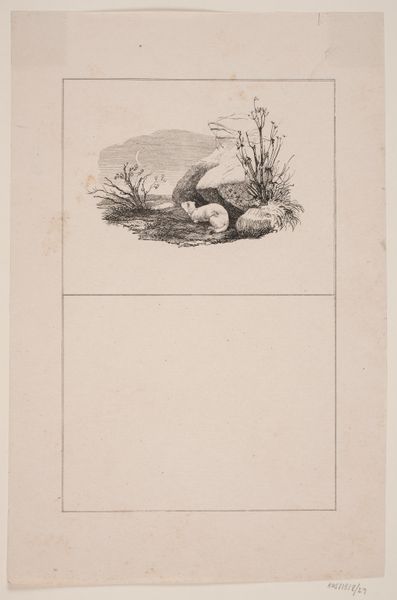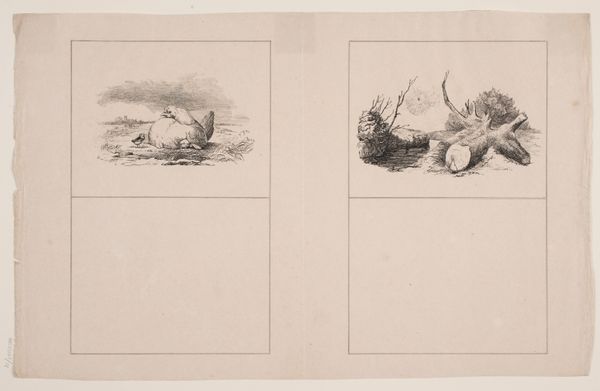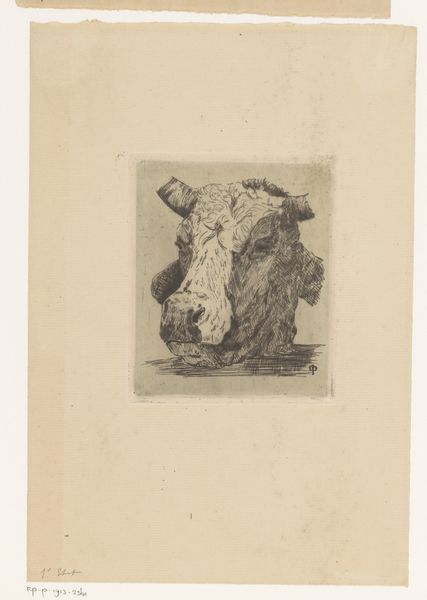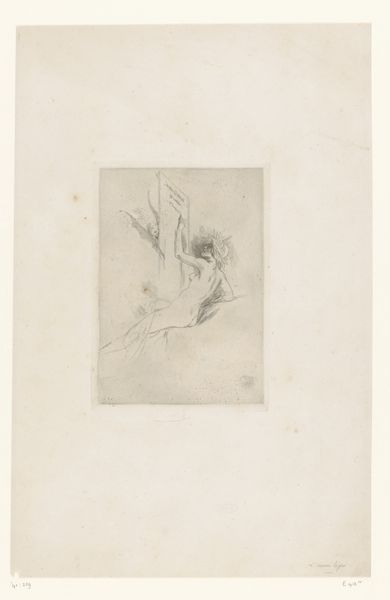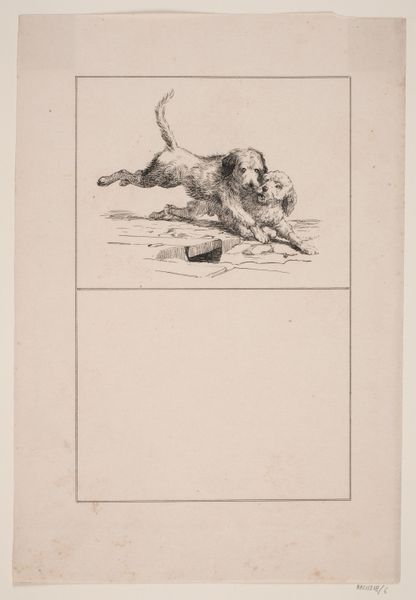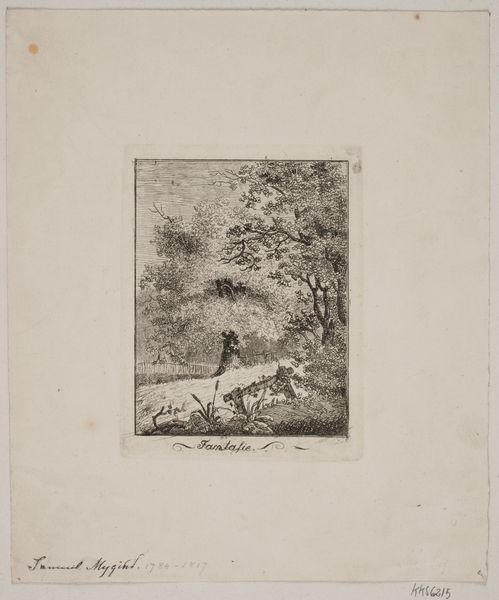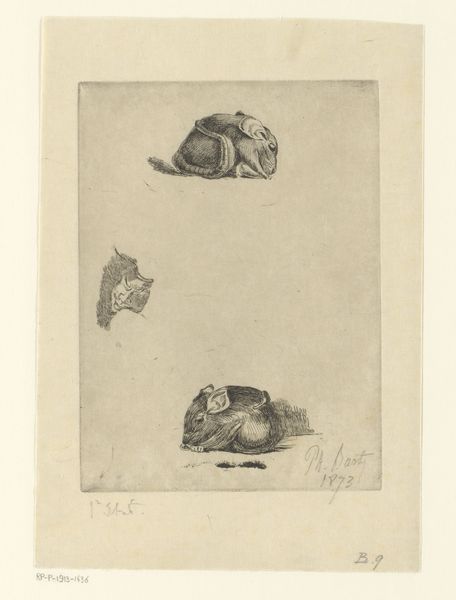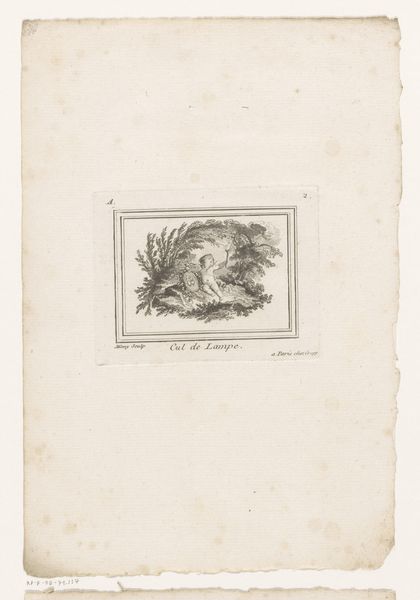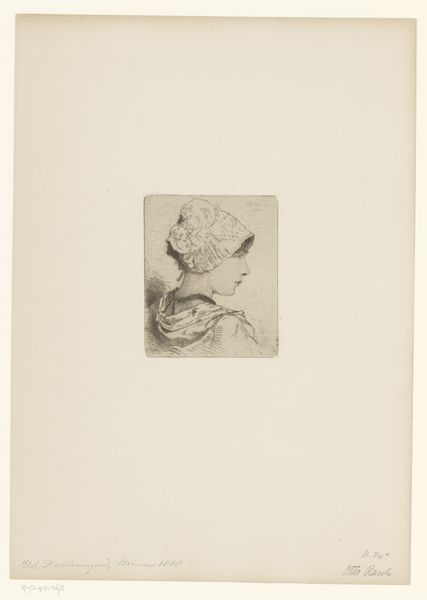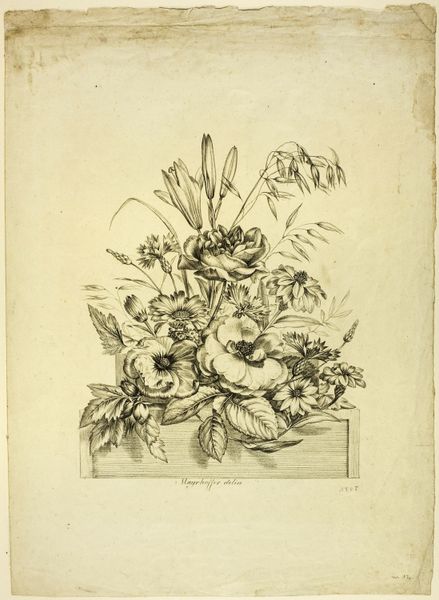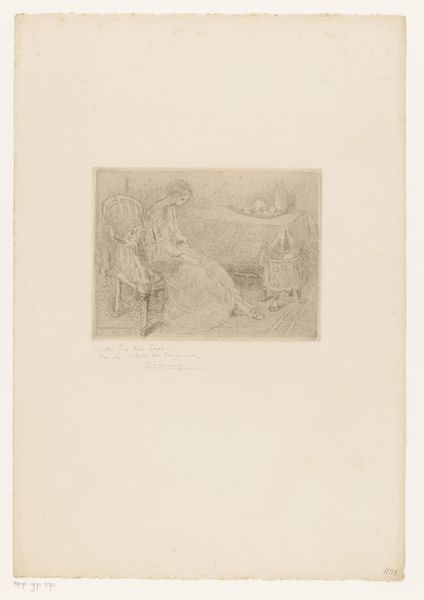
lithograph, print
#
lithograph
# print
#
landscape
#
line
Dimensions: 259 mm (height) x 173 mm (width) (bladmaal)
Editor: So, here we have Adolph Kittendorff's lithograph titled "Edderkoppen," created in 1845. I am really struck by the contrast. The stark black lines forming this very desolate and lonely landscape are somewhat ominous. What is your read of the landscape? Curator: Given that this is a landscape done in 1845, right in the midst of rising nationalism, Romanticism, and an emergent Danish national identity, I immediately want to consider the role the imagery plays in creating or shaping those values. The prominence of what looks like a felled tree. Is it glorifying nature, commenting on society or a call for preserving a specific place? Editor: That’s a great question. I hadn’t thought about the timing and how nationalism might influence something like a landscape. I guess I just assumed landscape painting was all about celebrating nature. Curator: And who benefits from that celebration? This was done in Denmark and placed in a museum. Consider the museum's function: How might it create an idea about a shared "Denmark?" Editor: So you’re saying that even a seemingly neutral landscape can be part of a bigger political or social picture? Like, this image could have been used to foster a sense of shared Danish identity. I always felt I needed to study so much information to just get art and all it did was be ‘pretty.’ It does so much. Curator: Exactly. Museums aren’t just spaces for art, they are spaces of representation of nationhood, citizenship, and taste. Editor: Thanks! I now will question landscape and how we look at places like these. It makes landscape even more exciting. Curator: It changes how we appreciate museums and their curation!
Comments
No comments
Be the first to comment and join the conversation on the ultimate creative platform.
